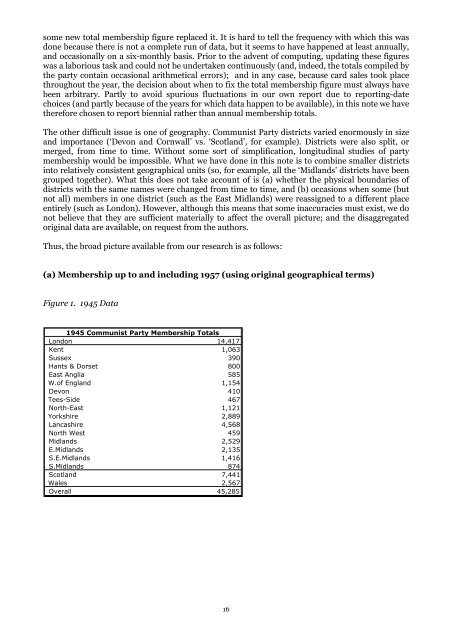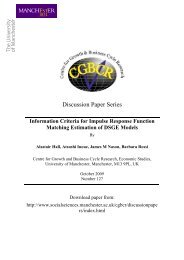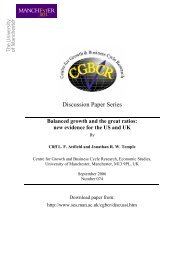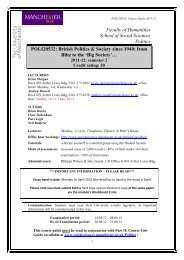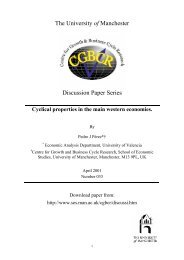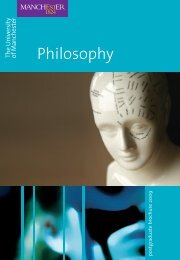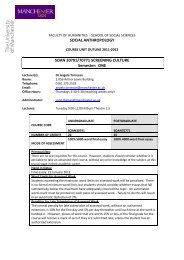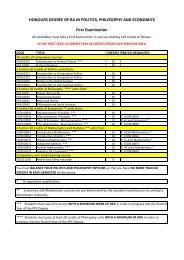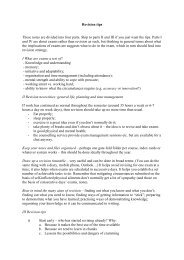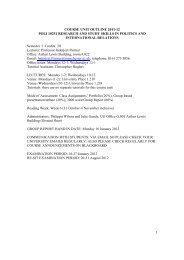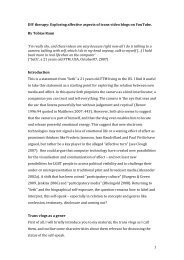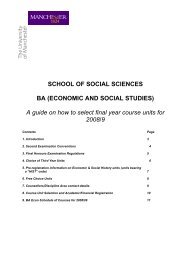CHNN 22, Spring 2008 - School of Social Sciences
CHNN 22, Spring 2008 - School of Social Sciences
CHNN 22, Spring 2008 - School of Social Sciences
You also want an ePaper? Increase the reach of your titles
YUMPU automatically turns print PDFs into web optimized ePapers that Google loves.
some new total membership figure replaced it. It is hard to tell the frequency with which this was<br />
done because there is not a complete run <strong>of</strong> data, but it seems to have happened at least annually,<br />
and occasionally on a six-monthly basis. Prior to the advent <strong>of</strong> computing, updating these figures<br />
was a laborious task and could not be undertaken continuously (and, indeed, the totals compiled by<br />
the party contain occasional arithmetical errors); and in any case, because card sales took place<br />
throughout the year, the decision about when to fix the total membership figure must always have<br />
been arbitrary. Partly to avoid spurious fluctuations in our own report due to reporting-date<br />
choices (and partly because <strong>of</strong> the years for which data happen to be available), in this note we have<br />
therefore chosen to report biennial rather than annual membership totals.<br />
The other difficult issue is one <strong>of</strong> geography. Communist Party districts varied enormously in size<br />
and importance (‘Devon and Cornwall’ vs. ‘Scotland’, for example). Districts were also split, or<br />
merged, from time to time. Without some sort <strong>of</strong> simplification, longitudinal studies <strong>of</strong> party<br />
membership would be impossible. What we have done in this note is to combine smaller districts<br />
into relatively consistent geographical units (so, for example, all the ‘Midlands’ districts have been<br />
grouped together). What this does not take account <strong>of</strong> is (a) whether the physical boundaries <strong>of</strong><br />
districts with the same names were changed from time to time, and (b) occasions when some (but<br />
not all) members in one district (such as the East Midlands) were reassigned to a different place<br />
entirely (such as London). However, although this means that some inaccuracies must exist, we do<br />
not believe that they are sufficient materially to affect the overall picture; and the disaggregated<br />
original data are available, on request from the authors.<br />
Thus, the broad picture available from our research is as follows:<br />
(a) Membership up to and including 1957 (using original geographical terms)<br />
Figure 1. 1945 Data<br />
1945 Communist Party Membership Totals<br />
London 14,417<br />
Kent 1,063<br />
Sussex 390<br />
Hants & Dorset 800<br />
East Anglia 585<br />
W.<strong>of</strong> England 1,154<br />
Devon 410<br />
Tees-Side 467<br />
North-East 1,121<br />
Yorkshire 2,889<br />
Lancashire 4,568<br />
North West 459<br />
Midlands 2,529<br />
E.Midlands 2,135<br />
S.E.Midlands 1,416<br />
S.Midlands 874<br />
Scotland 7,441<br />
Wales 2,567<br />
Overall 45,285<br />
16


